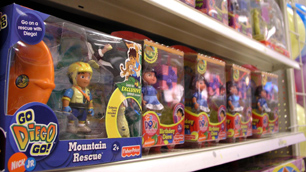
Calling the epidemic of recalls of these products a "crisis," U.S. researchers at the University of Massachusetts, and Monica Becker and Associates Sustainability Consultants say the current response by government, advocacy and industry groups has been inadequate in restricting the entry of toxic toys into the market.
"Much of the response to the toxic toys crisis has been reactive and piecemeal," write the authors. "Taken as a whole, these responses have not been sufficient to ensure that toys and children's products are safe."
The paper, published in ACS Publications' Environmental Science & Technology, a semi-monthly journal, says that in the past three years, 17 million toys have been recalled in the U.S. over high lead levels.
Other toxic substances commonly found in toys include:
- Cadmium and phthalates (which can harm the reproductive system).
- Brominated flame retardants and azo dyes (easily absorbed dyes linked to cancer).
- Bisphenol A (suspected of being toxic to the brain and reproductive system).
The authors say children's bodies are more susceptible to damage from toxic substances, due to their higher metabolic rate, greater surface area to weight ratio, immaturity of organ systems, and rapid growth and development of organs and tissues.
"Children receive multiple low-dose exposures daily from a variety of products with which they come into contact," they write.
The authors recommend the U.S government ban or limit the use of substances with well-known toxicity in toys and children's products. They also call on toy manufacturers to create an industry-wide list of toxic substances that should not be used in the production of toys.
"Until significant changes in policy and practice occur, consumers cannot be confident that products they purchase for children are safe, healthy and environmentally sustainable," the report says.



Reader Comments